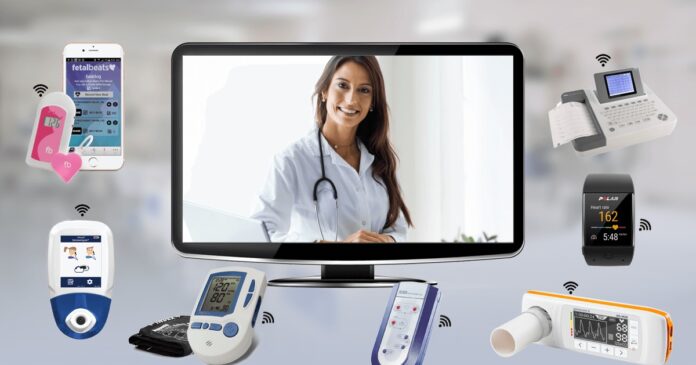Introduction
Millions of individuals throughout the world suffer with high blood pressure.It is a major cause of cardiovascular disease, stroke, and renal failure. Monitoring blood pressure is a crucial aspect of managing hypertension. Traditionally, blood pressure monitoring was done in a clinical setting. However, with the advent of technology, remote blood pressure monitoring systems have become increasingly popular. These systems use advanced technology to measure blood pressure from the comfort of one’s home. This article will explore the role of technology in remote blood pressure monitoring systems.
How Remote Blood Pressure Monitoring Systems Work?
Remote blood pressure monitoring systems are designed to help patients monitor their blood pressure from home and have accurate and up-to-date information in order to make informed decisions about a patient’s health. They typically consist of a blood pressure monitor, a mobile app, and a web portal. The blood pressure monitor is a device that is placed on the arm to measure blood pressure. The mobile app allows patients to record and track their blood pressure readings. The web portal allows healthcare providers to access the patient’s blood pressure data and monitor their condition remotely.
The Advantages of Using Remote Blood Pressure Monitoring Systems
Remote blood pressure monitoring systems have several benefits. Firstly, they allow patients to monitor their blood pressure from the comfort of their home, which is more convenient than going to a clinic. Secondly, they help patients to be more engaged in their healthcare by allowing them to track their blood pressure readings and share them with their healthcare provider. Thirdly, it can help healthcare providers to identify trends in a patient’s blood pressure readings and adjust their treatment accordingly.
The Role of Technology
Technology plays a critical role in remote blood pressure monitoring systems. It is used to capture and transmit data, as well as to analyze and store the data. The blood pressure monitor is a sophisticated device that uses advanced technology to measure blood pressure accurately. The use of technology in this system has made it easier for patients and healthcare providers to manage hypertension.
Sensors
The most important part of any remote blood pressure monitoring system is the sensors. These are used to measure the patient’s blood pressure and to transmit the data to the remote location. The sensors can be attached to the patient’s wrist or arm and are usually connected to a device such as a smartphone or tablet.
Data Collection & Storage
Once the data is collected by the sensors, it must be transmitted to the remote location. This is usually done via wireless technology such as Bluetooth or Wi-Fi. The data is then sent to a cloud-based platform where it can be analyzed and stored. It must be stored in order to track any changes in the patient’s blood pressure over time and can be used to identify any potential problems and to inform the healthcare professional of any changes that need to be made.
Connected Devices
In order for the remote blood pressure monitoring system to work, it must be connected to other devices such as smartphones and tablets. This allows the patient to access the data in real-time and to make any necessary changes to their lifestyle or medication.
Security
Data security is of the utmost importance when it comes to remote blood pressure monitoring systems. All data must be encrypted in order to protect the patient’s privacy and to ensure that the data is secure.
The Future of Remote Blood Pressure Monitoring Systems
The future of remote blood pressure monitoring systems looks promising. As technology continues to evolve, remote blood pressure monitoring systems will become more advanced. For example, future systems may incorporate artificial intelligence to analyze a patient’s blood pressure data and provide personalized treatment recommendations. Additionally, future systems may incorporate wearable devices that can measure blood pressure continuously, providing real-time data to patients and healthcare providers.
The Challenges of Remote Blood Pressure Monitoring Systems
Despite the many benefits of remote blood pressure monitoring systems, there are some challenges that need to be addressed. Firstly, not all patients have access to the technology required to use remote blood pressure monitoring systems. Secondly, some patients may have difficulty using the technology, which could lead to inaccurate readings. Finally, there are concerns about the security and privacy of patient data, which must be addressed to ensure that patient information is protected.
Conclusion
Remote blood pressure monitoring systems have revolutionized the way patients manage hypertension. They allow patients to monitor their blood pressure from home, which is more convenient than going to a clinic. They also help healthcare providers to monitor a patient’s condition remotely and adjust their treatment accordingly. Technology plays a critical role in remote blood pressure monitoring systems, and as technology continues to evolve, these systems will become more advanced. However, there are also challenges that need to be addressed, such as ensuring that all patients have access to the technology and addressing concerns about the security and privacy of patient data. Overall, remote blood pressure monitoring systems have the potential to improve the lives of millions of people worldwide.
